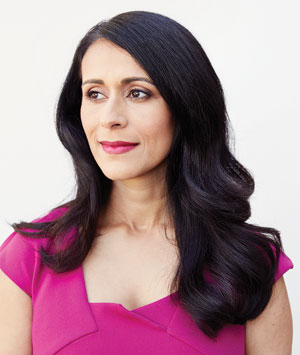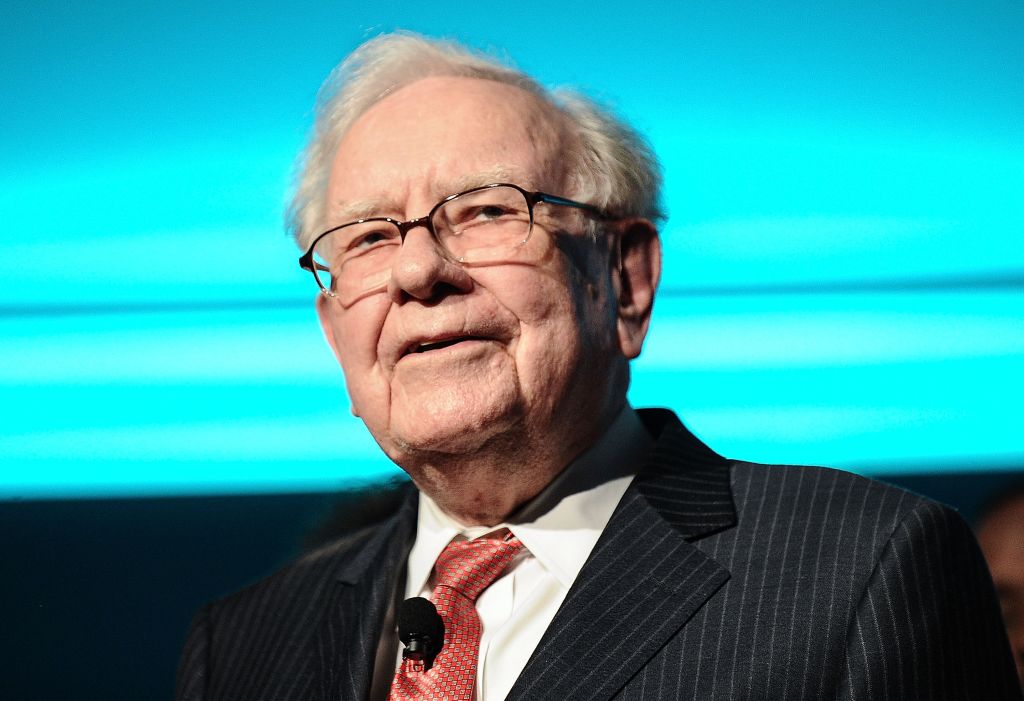TIAA-CREF Analyst Saira Malik Eyes European Stocks
With a weak currency helping exports and economies recovering, European equities look cheap.

Saira Malik is head of global stock portfolio management at TIAA-CREF. Here are excerpts from our interview:
Kiplinger’s: What’s ahead for investors in 2016?
Malik: In general, stocks should do better than fixed-income investments in 2016. We see Standard & Poor’s 500-stock index up by low-to-mid single digits, similar to what we saw in 2015, with a lot of volatility. In years when interest rates go up you see a lot of volatility around the increases.
From just $107.88 $24.99 for Kiplinger Personal Finance
Become a smarter, better informed investor. Subscribe from just $107.88 $24.99, plus get up to 4 Special Issues

Sign up for Kiplinger’s Free Newsletters
Profit and prosper with the best of expert advice on investing, taxes, retirement, personal finance and more - straight to your e-mail.
Profit and prosper with the best of expert advice - straight to your e-mail.

But no bear market? We’re still in a bull market, though in the late innings. Last summer’s correction was typical. But growth remains pretty strong in the U.S. The economy is on track; housing and the consumer look strong. We don’t see the things that generally cause a bear market. We don’t see any signs of a recession, stocks aren’t over-valued—they’re fairly valued—and there’s no credit crisis.
What are some of the themes you see playing out? An interesting shift is taking place. Over the past year, stocks with upward price momentum have led, including health care and Internet stocks. Economy-sensitive and bargain-priced stocks have not performed as well. But those will be the stocks you want to own in 2016 if you do see an improving economy. As growth slowly accelerates, industrial and basic-materials companies, such as chemical makers, could do well. For example, we like Olin Corp. (symbol OLN, $19), which makes chemicals used in many industrial and housing applications. But we also look for high-quality, momentum names when they trade down. In software, we consider Salesforce.com (CRM, $78) a core holding. You want to buy it on dips when the market is volatile.
What else do you like? Energy. We see a better demand-supply balance than the market sees right now. As oil prices have gotten lower, demand has remained strong. But drilling rig counts are declining, and oil production is down. The sector looks cheap, with price-to-book-value ratios below their historical average. One favorite is Diamondback Energy (FANG, $74). It operates in the Permian Basin, in the West Texas area. It’s a low-cost place to drill, with high-quality reserves, and Diamondback is a big player.
What’s your take on foreign markets? We like developed markets in general, and of all the world’s markets we have the highest conviction about Europe. Economic growth is in positive territory, and manufacturing is expanding. Interest rates are low, so businesses can borrow and consumers are buying houses and cars. A weak currency promotes exports. Stocks in Europe are up less than half the level of the S&P 500 since 2009, and assuming corporate earnings go back to normal levels, the stocks look cheap.
What should investors be buying there? We like the consumer discretionary sector—companies providing goods that aren’t necessities. In that group we like automaker Renault S.A. (RNLSY, $19).
How about emerging markets? We’re keeping a close eye on areas no one cares about, and emerging markets fall into that camp. But we’re selective. We’re fans of India as long as Prime Minister Modi continues to get support for plans to boost growth. By the second half of the year, investors should be taking a serious look at Brazil. Yes, it has problems, but the government has been trying to cut the deficit by reducing spending, and it’s raising interest rates to fight inflation and defend the currency. The economy is still contracting, but we think it will reach a trough around the middle of 2016, setting up the market for recovery.
What’s the biggest risk to the U.S. market? We’ve been watching wage inflation. We’re already starting to see some labor shortages in housing and in some service areas. Higher wages can squeeze profit margins, causing earnings to decline, and that could derail the bull market. Plus, if the Federal Reserve started to worry about inflation, it could raise rates faster than expected.
Profit and prosper with the best of Kiplinger's advice on investing, taxes, retirement, personal finance and much more. Delivered daily. Enter your email in the box and click Sign Me Up.

Anne Kates Smith brings Wall Street to Main Street, with decades of experience covering investments and personal finance for real people trying to navigate fast-changing markets, preserve financial security or plan for the future. She oversees the magazine's investing coverage, authors Kiplinger’s biannual stock-market outlooks and writes the "Your Mind and Your Money" column, a take on behavioral finance and how investors can get out of their own way. Smith began her journalism career as a writer and columnist for USA Today. Prior to joining Kiplinger, she was a senior editor at U.S. News & World Report and a contributing columnist for TheStreet. Smith is a graduate of St. John's College in Annapolis, Md., the third-oldest college in America.
-
 I'm want to give my 3 grandkids $5K each for Christmas.
I'm want to give my 3 grandkids $5K each for Christmas.You're comfortably retired and want to give your grandkids a big Christmas check, but their parents are worried they might spend it all. We ask the pros for help.
-
 If You're Not Doing Roth Conversions, You Need to Read This
If You're Not Doing Roth Conversions, You Need to Read ThisRoth conversions and other Roth strategies can be complex, but don't dismiss these tax planning tools outright. They could really work for you and your heirs.
-
 Could Traditional Retirement Expectations Be Killing Us?
Could Traditional Retirement Expectations Be Killing Us?A retirement psychologist makes the case: A fulfilling retirement begins with a blueprint for living, rather than simply the accumulation of a large nest egg.
-
 If You'd Put $1,000 Into Coca-Cola Stock 20 Years Ago, Here's What You'd Have Today
If You'd Put $1,000 Into Coca-Cola Stock 20 Years Ago, Here's What You'd Have TodayEven with its reliable dividend growth and generous stock buybacks, Coca-Cola has underperformed the broad market in the long term.
-
 If You Put $1,000 into Qualcomm Stock 20 Years Ago, Here's What You Would Have Today
If You Put $1,000 into Qualcomm Stock 20 Years Ago, Here's What You Would Have TodayQualcomm stock has been a big disappointment for truly long-term investors.
-
 If You'd Put $1,000 Into Home Depot Stock 20 Years Ago, Here's What You'd Have Today
If You'd Put $1,000 Into Home Depot Stock 20 Years Ago, Here's What You'd Have TodayHome Depot stock has been a buy-and-hold banger for truly long-term investors.
-
 If You'd Put $1,000 Into Bank of America Stock 20 Years Ago, Here's What You'd Have Today
If You'd Put $1,000 Into Bank of America Stock 20 Years Ago, Here's What You'd Have TodayBank of America stock has been a massive buy-and-hold bust.
-

 If You'd Put $1,000 Into Oracle Stock 20 Years Ago, Here's What You'd Have Today
If You'd Put $1,000 Into Oracle Stock 20 Years Ago, Here's What You'd Have TodayORCL Oracle stock has been an outstanding buy-and-hold bet for decades.
-
 If You'd Put $1,000 Into Sherwin-Williams Stock 20 Years Ago, Here's What You'd Have Today
If You'd Put $1,000 Into Sherwin-Williams Stock 20 Years Ago, Here's What You'd Have TodaySherwin-Williams stock has clobbered the broader market by a wide margin for a long time.
-
 If You'd Put $1,000 Into UnitedHealth Group Stock 20 Years Ago, Here's What You'd Have Today
If You'd Put $1,000 Into UnitedHealth Group Stock 20 Years Ago, Here's What You'd Have TodayUNH stock was a massive market beater for ages — until it wasn't.
-
 If You'd Put $1,000 Into Berkshire Hathaway Stock 20 Years Ago, Here's What You'd Have Today
If You'd Put $1,000 Into Berkshire Hathaway Stock 20 Years Ago, Here's What You'd Have TodayBerkshire Hathaway is a long-time market beater, but the easy money in BRK.B has already been made.